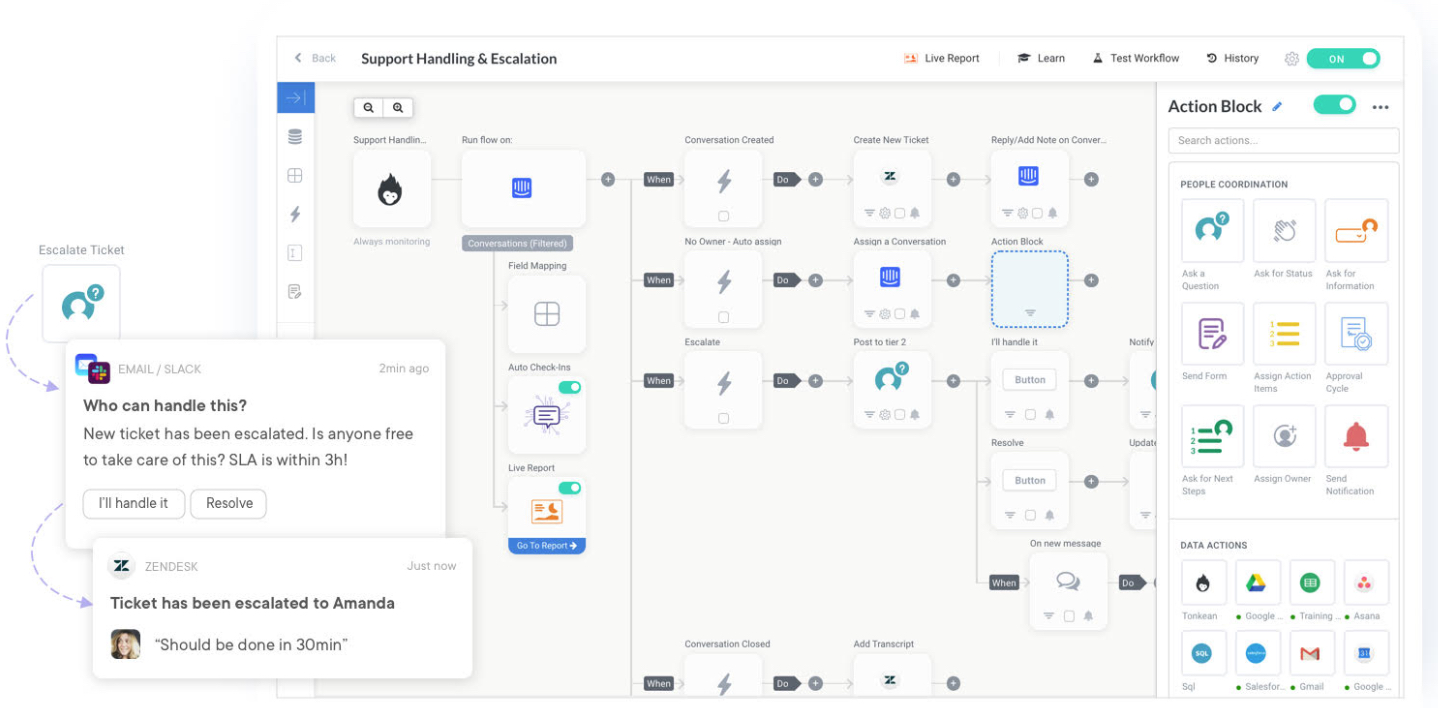Watch all the Transform 2020 sessions on-demand here.
Tonkean has announced a no-code RPA service offering and a fresh $7.2 million seed round. CEO and cofounder Sagi Eliyahu tends to use catchphrases like “human in the loop” and “last mile,” or at least he did when VentureBeat spoke to him about the company’s latest funding and product upgrades. These terms reflect a way of thinking about RPA that puts human workers at the center of the design and addresses the small and specific inefficiencies that slow them down every day.
The last (productivity) mile
That Tonkean wants to use RPA to reduce human toil and increase efficiency is not unique, but Eliyahu insists that too many other RPA solutions don’t address some of the core challenges that arise when knowledge workers employ automation. He said “the manual work is the one thing that’s left, and where we find the bottleneck” to greater efficiency.
In illustrating this issue, Eliyahu adapts the “last mile” problem: A train may take you from point A to point B, but that’s only 90% of your route. Then you need to bike, walk, take a cab, etc. to get the rest of the way home. And so it is, he said, with the numerous applications people use day to day, from CRM to email to Slack. “When you actually think about the existing tools that people have, [the tools] will usually solve problems in the way that trains do [for transportation],” he said.
He expounded by noting that there are different workflows for every company, product, and person. Tonkean’s assertion is that those small workflow differences add up, resulting in significant overall inefficiencies within organizations. It’s a gap that needs automating, Eliyahu said. Tonkean wants to close that gap with “operation bots” that automate the repetitive, time-consuming tasks workers endure each day but are also “dynamic in reacting and connecting to people.” That is to say, a bot can automate mundane tasks but can also offer proactive assistance, like reminding you when you need to do something or helping you coordinate with other members of your team.
June 5th: The AI Audit in NYC
Join us next week in NYC to engage with top executive leaders, delving into strategies for auditing AI models to ensure fairness, optimal performance, and ethical compliance across diverse organizations. Secure your attendance for this exclusive invite-only event.
Bots connecting dots
Creating a solution to knowledge workers’ “last mile” problem is one thing, but a secondary challenge is making it easy to set up, deploy, and use. “Real innovation can only happen when people adopt it,” Eliyahu noted.
Structurally, Tonkean creates connections between the applications you use, from email to Slack or CRM to ticketing. Tonkean’s approach is decidedly no-code, but it’s also almost “no interface” in a way. It’s not designed to be a whole new UI that everyone in the office has to learn. Rather, it hooks into all of the applications you connect it with and essentially adds functionality to them, like intelligently commenting on a ticket or sending a message. The only people who will likely be interfacing with the UI directly are operations teams and perhaps managers.

“It can be as invisible as you want it to be for that certain workflow,” he said. “The end user, most of the time, won’t even know that they interacted with Tonkean.” That speaks to the human-in-the-loop ideal — by refraining from interjecting themselves into workflows, Tonkean’s bots rely on the user interfaces that you already use.
Even for those who do dive into setting up Tonkean, it’s a drag-and-drop affair, designed so you don’t even need to be skilled at crafting IFTTT-level logic. “We came up with the concept of ‘When something happens, do,'” he said. All of the mapping, understanding of the entities, and data required for that workflow are handled by Tonkean.
Tonkean isn’t platform- or application-agnostic, per se, but there plenty of ready-made connections. “We have over 100 native integrations and a total of over 1,000 integrations. With our SaaS product, we have custom integrations that you can connect directly to your API,” he said.
Pricing for Tonkean is customized, so you “only pay for what you automate” on a subscription basis.
Using NLP and machine learning
Tonkean leverages a mix of technologies and tools. The part of the system that proactively reaches out to people and performs automatic check-ins comprises an NLP-powered coordination engine and Tonkean-created predictor models.
Then there’s machine learning powering the orchestration engine, which is essentially just the bot doing its work — looking for moments when its “logics” are being met. Tonkean uses anomaly detection to look for changes in behavior or activity, and smart mapping automatically understands that the object in a ticket system, say, is the same object in the CRM.
Tonkean adapts what it offers based on user behavior, so it ostensibly improves the more you use it.
Many humans in the loop
Theoretically, Tonkean can work within organizations of nearly any size, as small as 50 people, Eliyahu said. But he quickly added that a company of that size working with Tonkean would tend to be fast-growing. He also said that Tonkean has worked with companies that have around 200 teams and thousands of people but that the sweet spot is probably companies with a range of a few hundred to a few thousand employees.
He said it all comes down to whether or not your company has an “agenda for efficiency,” and on the maturity of the business processes.
Tonkean has a number of existing customers, including Salesforce and Microsoft. The $7.2 million funding round was led by Foundation Capital and included Magma Venture Partners and Slow Ventures.


